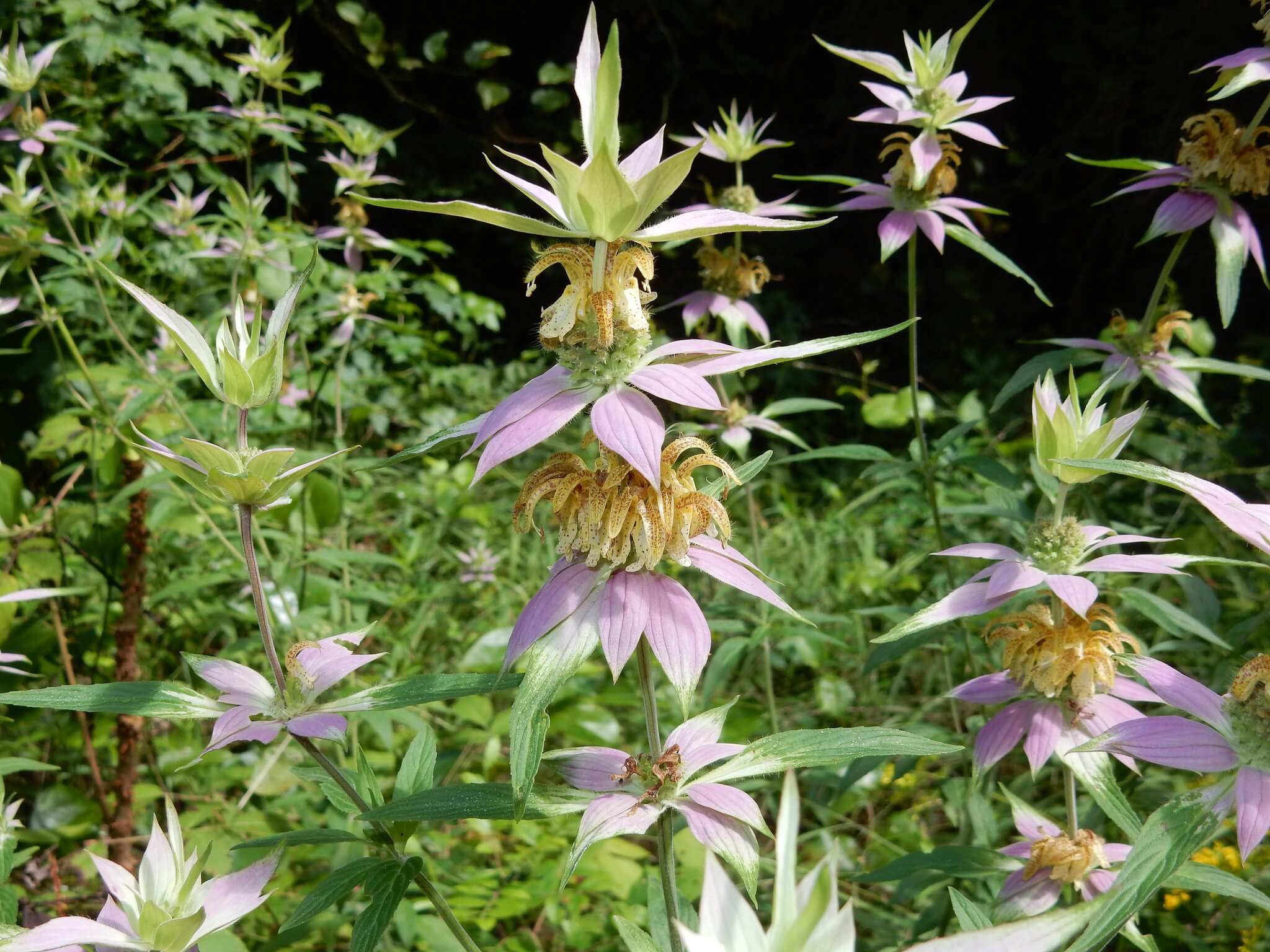Horsemint (Monarda punctata)
Horsemint (aka Spotted Bee Balm or Dotted Mint) is a really unique looking, short-lived perennial that reseeds in well-drained, sandy soils. The nectar and pollen of the flowers attract many native bees and is also the host plant to the specialist bees Dufourea monardae, Perdita gerhandi, and Protandrena abdominalis (Holm, 2017, p 172) (Johnson and Colla, 2023). Butterflies also visit the flowers of Horsemint for nectar, including the endangered Karner Blue (illinoiswildflowers.info) and 13 species of butterflies and moths use this as a caterpillar host plant in our area (nwf.org). Horsemint is recommended as a preferred pollinator plant by the Xerces Society (Xerces.org) and a recommended monarch nectar source (Xerces.org). Mammals rarely consume this plant because of its highly scented foliage.
Photo credit: JohnX12
Horsemint (aka Spotted Bee Balm or Dotted Mint) is a really unique looking, short-lived perennial that reseeds in well-drained, sandy soils. The nectar and pollen of the flowers attract many native bees and is also the host plant to the specialist bees Dufourea monardae, Perdita gerhandi, and Protandrena abdominalis (Holm, 2017, p 172) (Johnson and Colla, 2023). Butterflies also visit the flowers of Horsemint for nectar, including the endangered Karner Blue (illinoiswildflowers.info) and 13 species of butterflies and moths use this as a caterpillar host plant in our area (nwf.org). Horsemint is recommended as a preferred pollinator plant by the Xerces Society (Xerces.org) and a recommended monarch nectar source (Xerces.org). Mammals rarely consume this plant because of its highly scented foliage.
Photo credit: JohnX12
Horsemint (aka Spotted Bee Balm or Dotted Mint) is a really unique looking, short-lived perennial that reseeds in well-drained, sandy soils. The nectar and pollen of the flowers attract many native bees and is also the host plant to the specialist bees Dufourea monardae, Perdita gerhandi, and Protandrena abdominalis (Holm, 2017, p 172) (Johnson and Colla, 2023). Butterflies also visit the flowers of Horsemint for nectar, including the endangered Karner Blue (illinoiswildflowers.info) and 13 species of butterflies and moths use this as a caterpillar host plant in our area (nwf.org). Horsemint is recommended as a preferred pollinator plant by the Xerces Society (Xerces.org) and a recommended monarch nectar source (Xerces.org). Mammals rarely consume this plant because of its highly scented foliage.
Photo credit: JohnX12
Life Cycle: Perennial
Sun Exposure: Full, Partial
Soil Moisture: Medium-dry, Dry
Height: 2 feet
Plant Spacing: 1 foot
Bloom Time: July - September
Bloom Color: Purple
Advantages: Pollinator Favorite, Bird Favorite, Deer Resistant, Great Landscape plant
Host Plant: 13 species of butterflies and moths use this as a caterpillar host plant in our area (nwf.org)
Specialist Bee: Black Sweat Bee Dufourea monardae, Perdita gerhandi, and Protandrena abdominalis(Holm, 2017, p 172) (Johnson and Colla, 2023)
Resource: Holm, Heather. Bees: An Identification and Native Plant Forage Guide. Pollination Press LLC, 2017
Resource: Johnson, Lorraine, and Sheila Colla. A Northern Gardener’s Guide to Native Plants and Pollinators: Creating Habitat in the Northeast, Great Lakes, and Upper Midwest. Island Press, 2023






